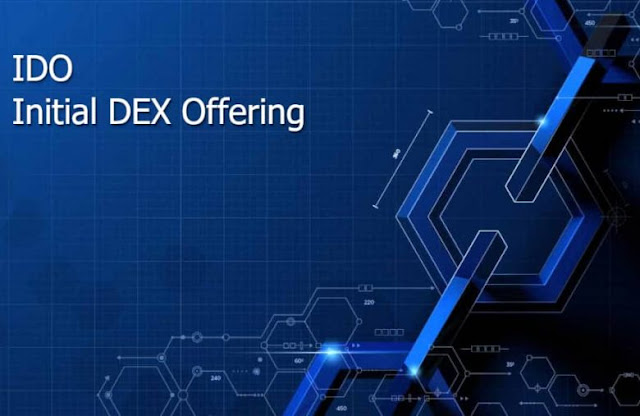A Brief Guide On Decentralized Finance Development
Decentralized finance development makes use of blockchain technology to provide everyone in the globe with access to financial services without the need for any middlemen. It mostly runs through DApps on Ethereum-based platforms. It operates on a permissionless basis and makes use of public distributed ledgers. Borrowing, lending, investment, payments, insurance, trading, and asset management are all covered.
Defi Development's Massive Ascension According to DeFi pulse, an industry publication that regularly monitors the business, a total of $14.17 billion has been set aside for various projects.
MakerDAO, Compound, Aave, Uniswap, Synthetix, and Balancer are among the heavyweight projects.
Ethereum boasts the most applications, user activity, and trading volume of any cryptocurrency.
➼ EOS has a massive transaction volume.
➼ The Lightning Network is a successful DeFi program for Bitcoin. It provides fast payments that are enforced by smart contracts, is scalable, has very low fees, and allows for cross-chain atomic exchanges.
➼ If Ethereum 2.0 is successfully launched in December 2020, DeFi will receive a significant boost. It will optimize network design while keeping security and scalability in mind.
The Most Important Benefits of Decentralized Finance Solutions (DeFi) It is extremely resistant to transaction filtering by various central bodies. By removing the role of third parties from the system, this ensures global involvement without any economic or social prejudice.
⇝ Through his private keys, the user has complete control over his assets. He is not required to deposit any dollars, and the system is non-custodial in nature.
⇝ Principal-agent risks are avoided, and all personal interests are managed by a well-defined and transparent protocol, ensuring price and market efficiency. Users can join DeFi projects even if they don't have a bank account or a good credit score.
The Obstacles to Decentralized Financial Development's Growth
• The DeFi ecosystem as a whole is still undergoing a lot of technological testing and development. The user interface is still a bit confusing.
• Compared to DeFi ventures, centralized financial systems have higher liquidity. Liquidity is crucial since it is the foundation of pricing efficiency.
• The items are overcollateralized because no credit score is required. This decreases the amount of leverage available to expert traders.
• If there are any vulnerabilities in the smart contract, like as overflows, underflows, or reentrancy attacks, it can result in erroneous or fraudulent transactions on the immutable blockchain network, which are irreversible.
• There are significant operational hazards if price feeds fail or are manipulated, as well as complex governance protocols.
• Ethereum is experiencing network congestion, which causes delays in transaction processing, resulting in market inefficiency and difficulties in disseminating information to diverse players on a timely basis.
• Transactions with lesser gas payments may be left pending at lower priorities since they compete directly for the same amount of gas money.
The Defi Development's Various Applications
Borrowing and lending are two different things. The demand for loans has risen dramatically as a result of the surge in corporate activity. Lenders can provide borrowers bitcoins in exchange for monthly interest payments. The borrower can build leverage by selling an asset short. Dharma is a popular DeFi lending system that supports over 2000 different assets and also includes a non-custodial smart wallet with over 4 million token pairs.
Stablecoins - Stablecoins were created in response to the significant market volatility experienced by cryptocurrencies. It will most likely be linked to a major fiat currency. MakerDAO has a stablecoin called DAI that can be used in games, wallets, and DeFi platforms. It is a decentralized money with a stable price managed by smart contracts.
Decentralized exchanges - Cryptocurrencies can be exchanged directly between buyers and sellers without the intervention of central authority. IDEX is a well-known decentralized exchange with a fast matching engine and the ability to accept sophisticated order types. A private key can be used to manage the funds, which are protected by an open-source smart contract.
It offers advanced financial tools such as index tracker, puts and calls, and futures, as well as derivatives, exotic assets, and prediction markets. It can be used for risk management and leverage trading. Users can acquire on-chain exposure to a number of assets via Synthetix, a popular derivatives liquidity protocol. By supplying collateral to the Synthetix protocol, rewards will be gained. Derivatives trading, staking, and decentralized asset management are all available.
Insurance - The demand for insurance has grown in recent years as a result of the large number of risks and uncertainties that exist in our environment. Users are protected by DeFi insurance initiatives from a variety of risks, including price risk, counterparty default risk, technological risk, and network risk. Etherisc is a well-known insurance platform that provides a variety of insurance products, including flight delay insurance, hurricane protection, crop insurance, social insurance, collateral protection for crypto-backed loans, and crypto wallet insurance. A general insurance framework, a decentralized insurance platform, and a decentralized insurance protocol are the three major platform layers.
Expectations for Decentralized Finance Solutions in the Future (DeFi)
DeFi will become more widely used in the next years as more digitalization and blockchain technology is adopted. It requires more professional management and must appeal to a broader audience than simply blockchain enthusiasts. Low liquidity, an intuitive user interface, capital inefficiency, hidden technological hazards, and regulatory uncertainty are the key hurdles.
It has the potential to play a significant role in cross-border networking. Decentralized finance solutions will primarily alter traditional financial systems in the areas of decision-making, risk-taking, and record-keeping. Many institutional investors are turning to DeFi to get away from the inefficient and outmoded traditional financial system.



Comments
Post a Comment